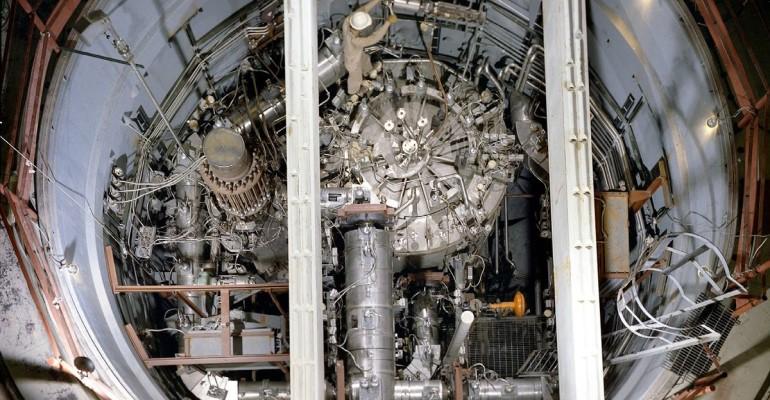Speaking at a webinar in January, Core Power Technical Director Giulio Gennaro said that from a technical perspective it is possible to retrofit nuclear power onto an existing vessel, just as many other significant engineering works are carried out on vessels during drydock, such as widening. What may stop that from ever happening is the relative cost of building a vessel and the higher cost of modern nuclear reactors.
“Once when we consider the cost of the nuclear ship as a whole and the cost of the reactor, we see that the cost of the hull is marginal. So in my opinion, there is hardly an economic case in taking an existing conventional ship, which has relatively low residual value, and making a new nuclear ship out of it rather than building a completely new ship,” said Gennaro.
While the high upfront cost of building and fuelling a nuclear reactor prohibits retrofit, the lifetime savings on fuel and the residual value of nuclear fuel at the end of a ship’s operating life significantly alter the usual financing model for ships, said William Fennelly, Marine Engineer at Core Power.
Fennelly used an example of a theoretical nuclear-powered newcastlemax, a vessel which would cost around $100m to build plus $150m for the reactor and $250m for its fuel inventory for a total $500m capital and operational expenditure.
“Consuming bunker fuel, the same ship with a $60m capex plus fuel at $600 and carbon taxes at $100 per tonne would cost roughly the same $500m in combined CapEx and OpEx. Consuming green synthetic fuels like ammonia and methanol, we estimate the costs we could quadruple - that's $2bn,” said Fennelly.
Where nuclear builds an economic lead over traditionally-fuelled vessels is in the residual value of the nuclear fuel over time. A fuel inventory of $250m could be worth $500m at the end of a ship’s life, with some set aside for decommissioning the reactor.
When a ship reaches the end of its operational life, “the liquid nuclear fuel would be drained from the reactor and loaded into the next generation fast Molten Salt Reactor (MSR) for reuse over another 30 years, and so on and so on.
“Financing the nuclear fuel becomes a very different proposition. We advocate for leasing,” said Fennelly.
Core Power’s vision for nuclear fuelled ships does not involve commercial vessel operators becoming licensed operators in the nuclear space. Instead, the fuel energy and reactor are all leased, bundled with liability insurance, reactor operators and maintenance costs.
Even using what they called conservative figures for the inflation of the nuclear fuel’s value, a significant margin is created between the actual and financeable value which enables the leasing model.
Core Power Analyst Thomas Davies laid out the case for controlling costs in the building of nuclear ships by using the skilled workforces and efficient modular construction techniques in modern shipyards.
The extremely high cost and delays of nuclear projects in the energy generation space are include nuclear islands and turbine equipment, but also the difficulties of finding a reliable workforce to commit to long projects and the challenges of on-location construction. Such added costs can often affect the financial viability of projects, said Davies.
“Here is where we believe shipyard construction offers a game changing opportunity. This industry has thrived on large scale fabrication of complex assets. And it's done this by using a skilled, consistent workforce to achieve low cost, high productivity and high-quality construction.
One way that shipyards have been able to achieve this is by utilizing modular modular construction, which has allowed the transition to factory fabrication. This way, each module is manufactured in controlled factory conditions and eliminates the need for any size specific work, offering an integrated manufacturing assembly installation process all in one in this way, several processes can be conducted in parallel, reducing time overlaps and increasing construction efficiencies,” said Davies.
The knowledge developed in a shipyard environment could also prove significant for the decommissioning of nuclear vessels at the end of their operating life, he added.
Copyright © 2024. All rights reserved. Seatrade, a trading name of Informa Markets (UK) Limited.
Add Seatrade Maritime News to your Google News feed.  |

